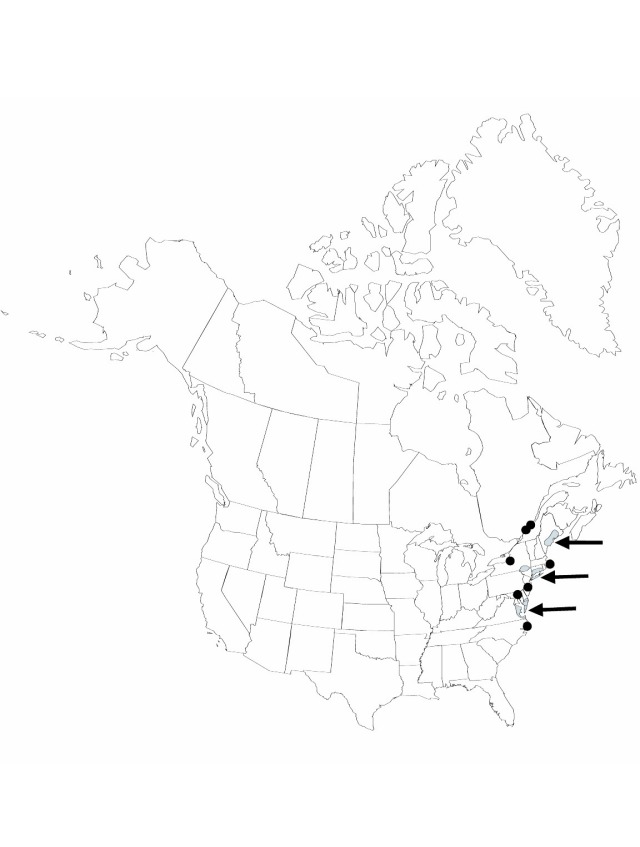Eriocaulon parkeri
Rhodora 5: 175. 1903.
Herbs, perennial, 10–20(–30) cm. Leaves linear-attenuate, 2–6(–9) cm, apex filiform-terete. Inflorescences: scape sheaths slightly longer or slightly shorter than leaves, loose; scapes linear, 0.5–1 mm wide, 4–5-ribbed; mature heads dull gray or lead-colored, rarely straw-colored, hemispheric to subglobose, 3–4 mm wide, mostly nearly glabrous; receptacle glabrous; outer involucral bracts usually not reflexed, not obscured by braceteoles and perianth, straw-colored, greenish, or light gray to gray, dull, ovate to suborbiculate or obovate, 2 mm, margins often erose or lacerate, apex blunt, glabrous; inner bracts, receptacular bracteoles grayish, cuneate to narrowly obovate, 2 mm, margins often erose or lacerate, apex obtuse, glabrous or with a few white hairs abaxially at apex. Staminate flowers: sepals 2, gray, linear to oblong or oblanceolate, 2 mm, apex obtuse, glabrous or with a few white hairs abaxially at apex; androphore club-shaped; petals 2, triangular, minute, white-hairy; stamens 4; anthers black. Pistillate flowers: sepals 2, gray, oblong or oblanceolate, 2 mm, scarious, apex obtuse, abaxially hairy apically; petals 2, yellow-white, spatulate, 2 mm, apex obtuse, glabrous or with a few white, club-shaped hairs apically, adaxially; pistil 2-carpellate. Seeds red-brown, ovoid to broadly ellipsoid, 0.5(–7) mm, with delicate reticulum of horizontally oriented alveolae.
Phenology: Flowering summer–fall.
Habitat: Muddy tidewater banks, brackish marsh, mud flats
Elevation: 0–100 m
Distribution

Que., Conn., Del., Maine, Md., Mass., N.J., N.Y., N.C., Va.
Discussion
A considerable amount of transitional material occurs between Eriocaulon parkeri and E. aquaticum at places along coastal streams where brackish habitat meets more acid habitat upstream.
Selected References
None.